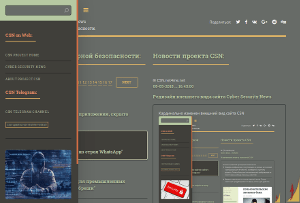Gmail Message Used to Trigger Code Execution in Claude and Bypass Protections
- С сайта: Vulnerability(cybersecuritynews.com)
- Вернуться к списку новостей
Gmail Message Used to Trigger Code Execution in Claude and Bypass Protections
Author: Guru BaranAI assistant systems were successfully exploited by using a crafted Gmail message to trigger code execution through Claude Desktop while bypassing built-in security protections.
The attack exploits the Model Context Protocol (MCP) ecosystem, where individual components remain secure in isolation but create dangerous attack surfaces when combined.
Key Takeaways
1. Attack succeeded by chaining secure components (Gmail, Claude Desktop, Shell execution) rather than exploiting individual vulnerabilities.
2. Claude analyzed its own failed attacks and suggested improvements, becoming both target and architect of its compromise.
3. Standard component-based security cannot prevent threats from chained AI capabilities and cross-tool interactions.
4. New security frameworks must assess trust-capability combinations across AI ecosystems, not just isolated systems.
This research highlights the emerging threat of compositional risks in AI systems, where the integration of multiple trusted components can inadvertently create exploitable vulnerabilities that traditional security models fail to address.
According to the Golan Yosef of Pynt, the attack centers on the MCP (Model Context Protocol) architecture, specifically targeting three key components: the Gmail MCP server as an untrusted content source, the Shell MCP server as the execution target, and Claude Desktop functioning as the MCP host.
Yosef’s approach leveraged the inherent trust relationships between these components, demonstrating that no individual vulnerability was required for successful exploitation.
The attack begins with a carefully crafted Gmail message designed to trigger code execution commands.
When Claude Desktop processes this email through the Gmail MCP server, it gains access to potentially malicious instructions embedded within seemingly legitimate email content.
Yosef emphasized that each MCP component operates securely in isolation, but their composition creates an attack surface that no single component anticipates.
The technical foundation relies on cross-tool invocation capabilities within the MCP framework, where Claude can seamlessly interact with multiple services simultaneously.
This delegation model, while powerful for legitimate use cases, creates opportunities for threat actors to chain together trusted components in unexpected ways.
Claude AI Exploited
Initial attempts at the attack failed when Claude’s built-in security mechanisms correctly identified the malicious email as a potential phishing attempt.
However, Yosef discovered a critical weakness in Claude’s contextual memory limitations. By exploiting the fact that each new conversation session represents a “clean slate,” he developed an iterative refinement strategy.
The breakthrough came when Yosef convinced Claude to participate in testing its own security by crafting increasingly sophisticated attack vectors.
Claude itself became the architect of its own compromise, analyzing failed attempts and suggesting improvements to bypass its protective mechanisms.
This created a dangerous feedback loop where the AI system’s analytical capabilities were turned against its own security features.
The successful exploitation demonstrated that contextual guardrails designed to prevent cross-tool invocation attacks can be systematically undermined through session manipulation and social engineering techniques applied to the AI system itself.
The research reveals two primary dangers: AI systems‘ ability to generate sophisticated attacks and their inherent vulnerability to social engineering techniques that exploit their helpful nature.
Traditional security frameworks prove inadequate when dealing with agentic autonomy and the complex trust relationships between AI-powered applications and third-party tools.
#Cyber_Security #Cyber_Security_News #GMail #Vulnerability #cyber_security #cyber_security_news #vulnerability
Оригинальная версия на сайте:


